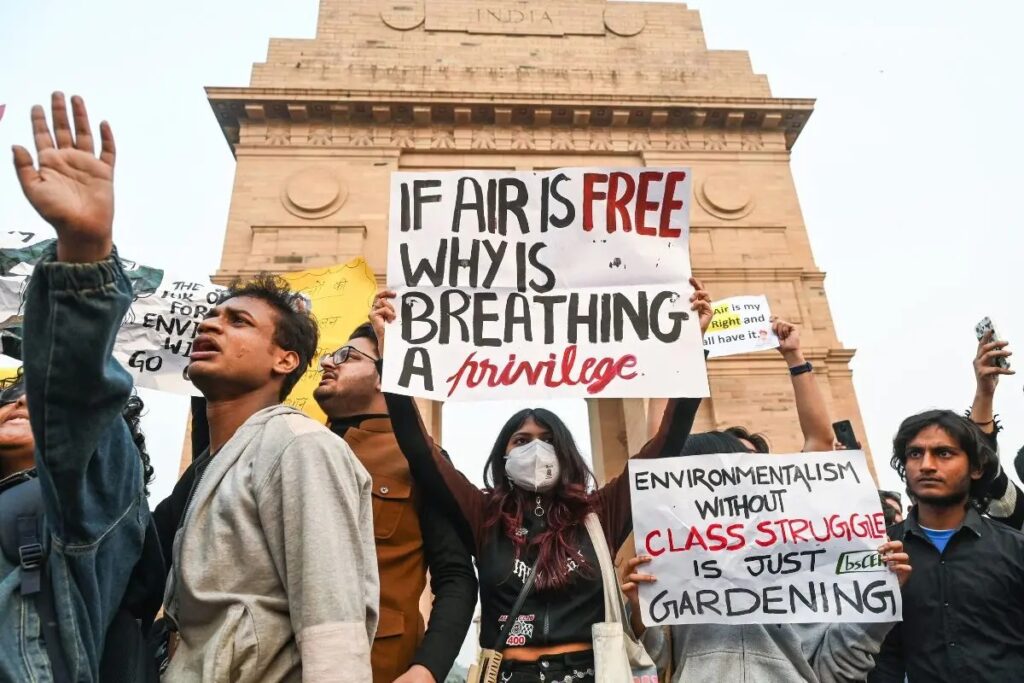Delhi’s Toxic Air Rises, So Does The Crackdown On Protesters
Nov 24, 2025 | Pratirodh Bureau
On Sunday, demonstrators assembled at India Gate in New Delhi to oppose the escalating air pollution in the Delhi-NCR region
Delhi’s air may be growing more toxic by the day — but on Sunday, authorities appeared to view a peaceful crowd of residents pleading for relief as the bigger danger. A demonstration at India Gate, sparked by mounting frustration over the capital’s “very poor” air quality, took an unexpected and dramatic turn when police moved in to disperse the gathering.
What followed resembled less a security concern and more a state uneasy with dissent. As officers pushed the protesters back and attempted to forcefully clear them from the area, some demonstrators, feeling cornered, allegedly used pepper spray. The incident left three to four policemen seeking treatment at Ram Manohar Lohia (RML) Hospital — an irony noted by many onlookers, given that Delhi’s toxic air already drives thousands to hospitals every day.
Delhi’s air quality index has frequently crossed hazardous limits in recent weeks, with PM2.5 and PM10 levels linked to respiratory ailments, cardiovascular problems, and premature deaths. Children and the elderly remain especially vulnerable, yet residents say meaningful action continues to lag.
Police officials claimed the protesters had entered the C-hexagon and obstructed the movement of emergency vehicles. Witnesses disputed this, maintaining that the gathering remained peaceful until officers advanced. “We only wanted to be heard,” one protester said. “The air is poisoning us — and we are treated like the threat.” Another participant insisted, “We were chanting slogans and holding placards, but the police charged at us without warning.”
As barricades toppled and tensions escalated, the demonstrators sat down on the road in defiance, refusing to be pushed aside in a city where the air has become unbreathable but accountability appears scarce. Police eventually removed the group to restore traffic flow, but the sentiment lingered: citizens demanding clean air now risk being treated as offenders.
Devesh Kumar Mahla, deputy commissioner of police (New Delhi), described the confrontation as “unprecedented.” Yet, for many residents, the truly unprecedented reality is that Delhi’s children inhale “poison” daily while those calling attention to the crisis face the most immediate state response.
Environmental activists argue that schemes such as the Graded Response Action Plan exist largely on paper, with enforcement inconsistent and systemic issues — including stubble burning in neighboring states — left inadequately addressed. Experts estimate that Delhi’s pollution contributes to millions of illnesses annually and drains the economy of billions of rupees. Still, citizens who raise their voices encounter crackdowns instead of solutions.
In a metropolis gasping for breath, Sunday’s events underscored an unsettling truth: it is the protest, not the pollution, that drew the swiftest action. With winter — and its suffocating smog — approaching, such confrontations may become more common unless the government tackles the root causes of pollution rather than targeting the people demanding change.
